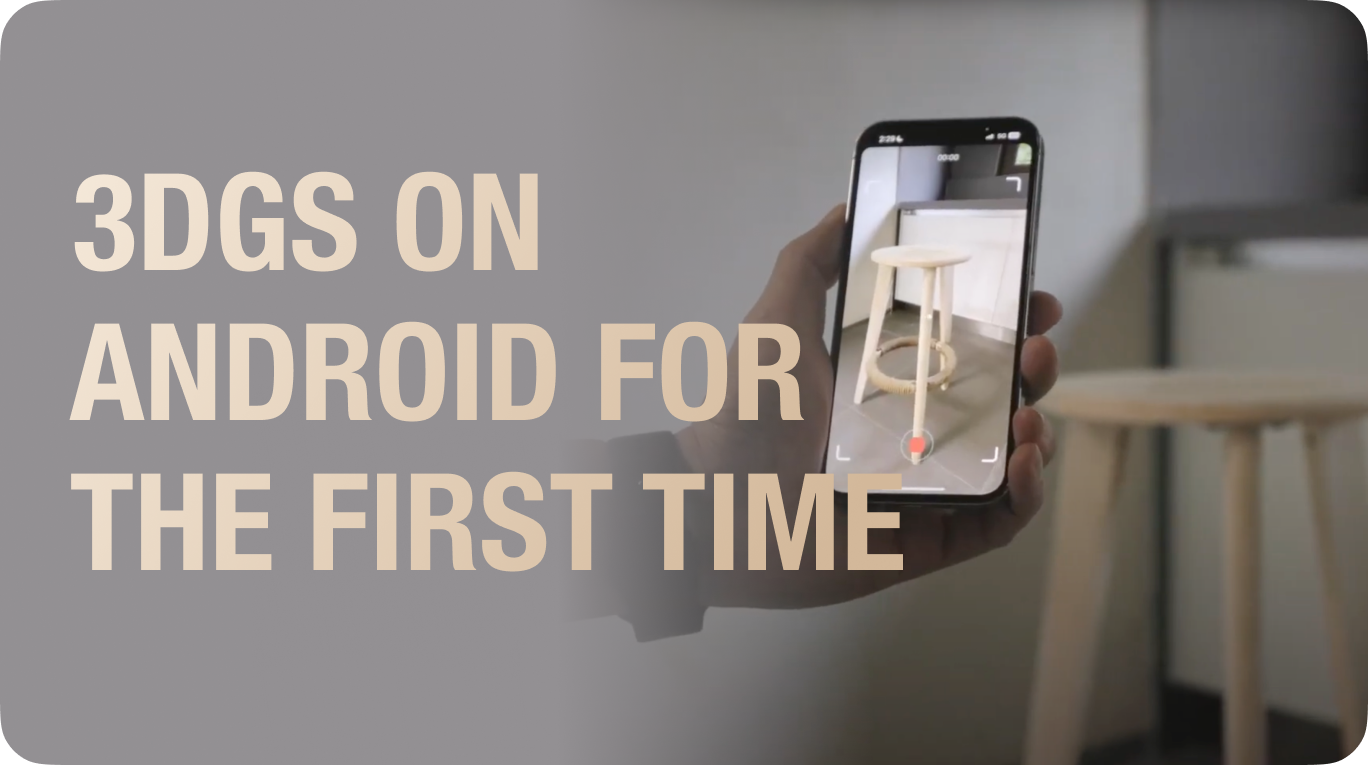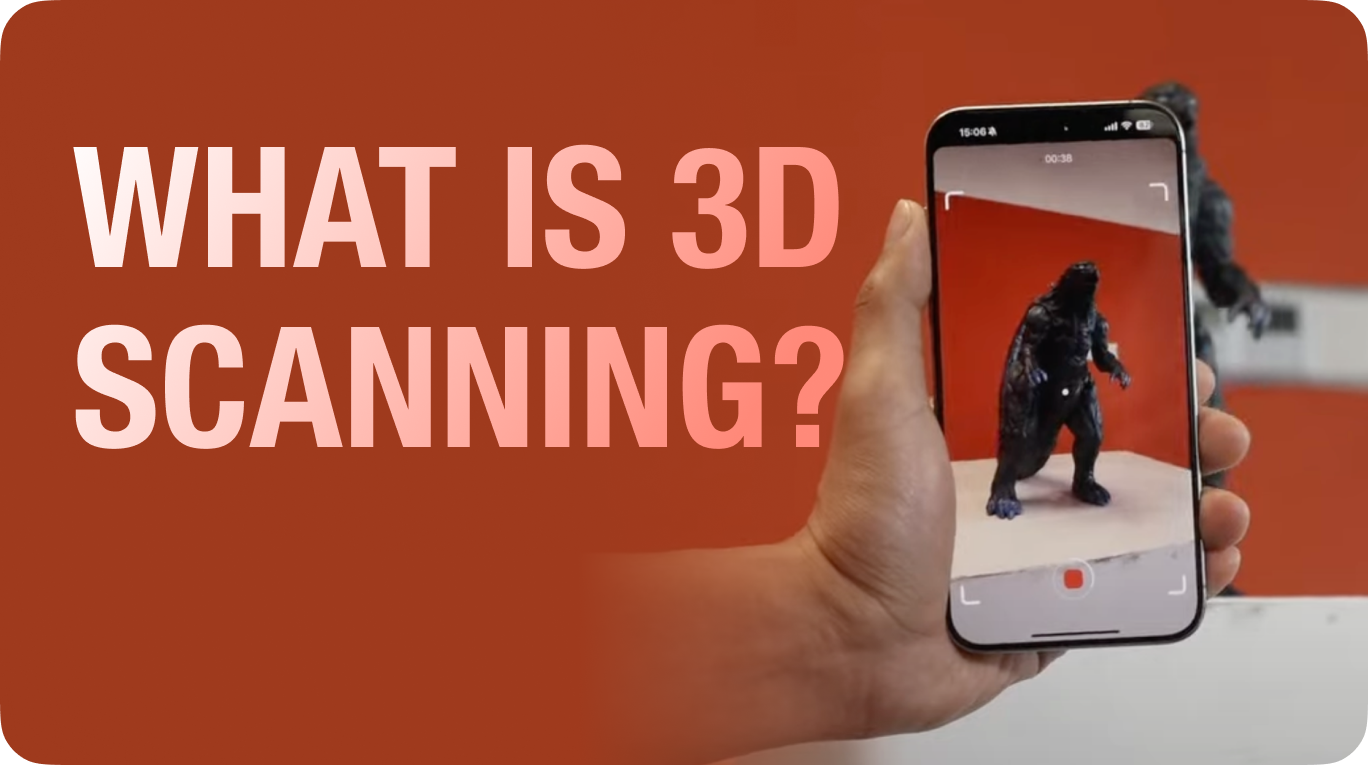Why Is My Scan All Over the Place?
Struggling with messy 3D scans? Shiny, reflective surfaces might be the culprit! Learn why traditional photogrammetry struggles with certain objects and how KIRI Engine’s exclusive Featureless Object Scan can solve the problem effortlessly.
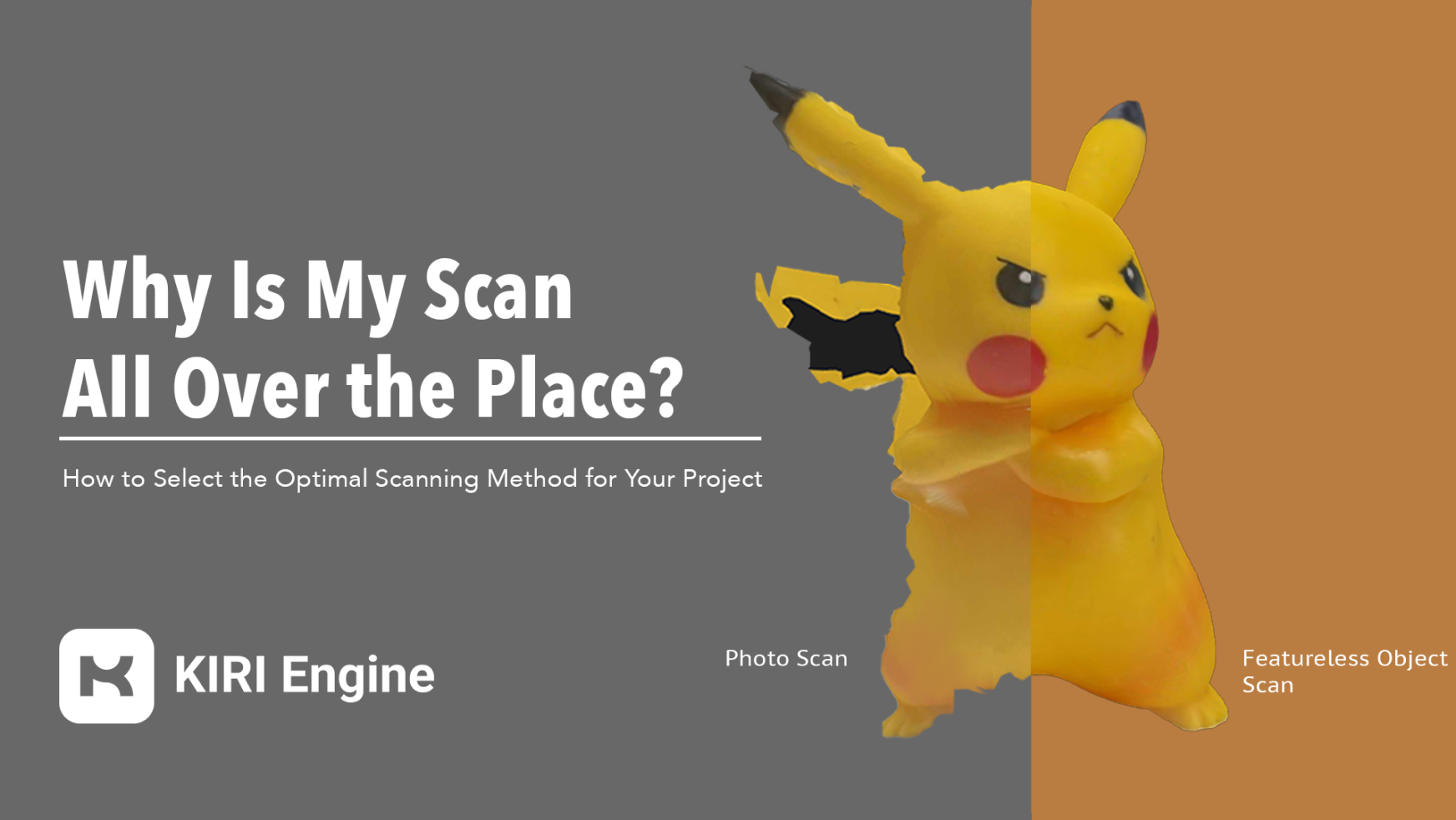
3D scanning, despite its prevalence and accessibility today, still often produces inadequate results. Many users who are new to photo scanning will encounter this frustration: "I followed the instructions, set up the perfect environment, and took clean photos orbiting around the object, but the results turned out to be utterly unusable!"
Why?
The answer is often a lot simpler than expected: the object is not suited for traditional photogrammetry. These simple objects, such as aluminum cans, plastic bottles, or a toy car, can't even be scanned. How can such an advanced 3D scanning tool not generate adequate models from these objects?
It's because these rather 'simple' objects possess shiny/reflective surfaces, which are actually the most difficult for photogrammetry to process.
The photogrammetry algorithm analyzes the unique features on the scanned object's surfaces, by connecting these unique 'feature points' from frame to frame, the algorithm can then reconstruct a 3D model based on the images it's fed.
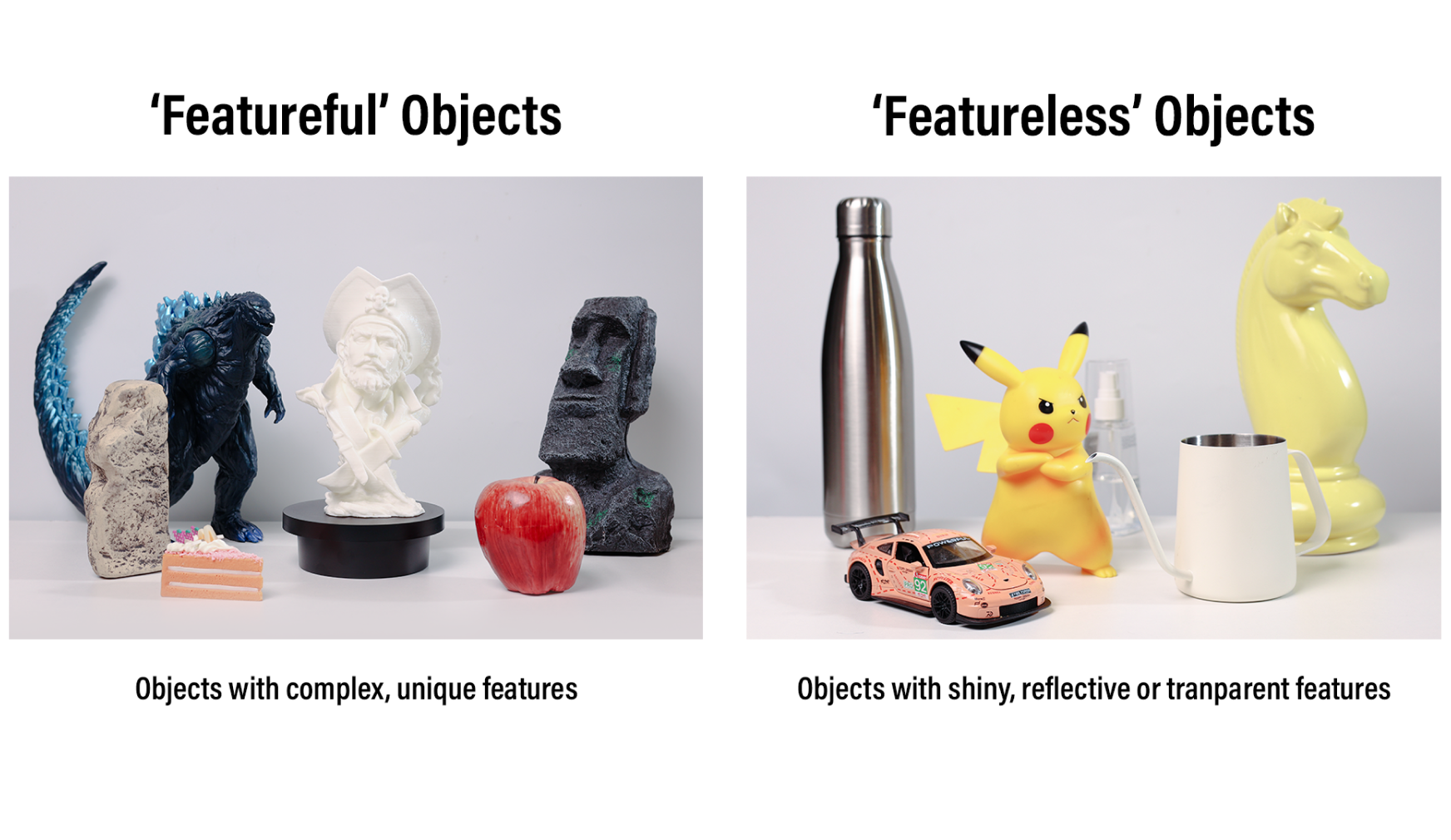
Naturally, photogrammetry will have a hard time dealing with objects that have shiny/reflective surfaces due to insufficient/inconsistent feature points. To solve this issue, professionals in the past would manually increase the unique features on the objects' surfaces by taping the surface for traction or applying material such as dirt to make them less reflective.
KIRI, however, has a straightforward solution: Featureless Object Scan.
Let's cut to the chase. This unique scanning method uses a machine learning algorithm that effectively analyzes videos and reconstructs the objects into 3D models, regardless of their texture or material. This is achieved through a combination of technologies and utilizes the continuous framing to determine the object's surfaces and shapes. For more details, please read this article.
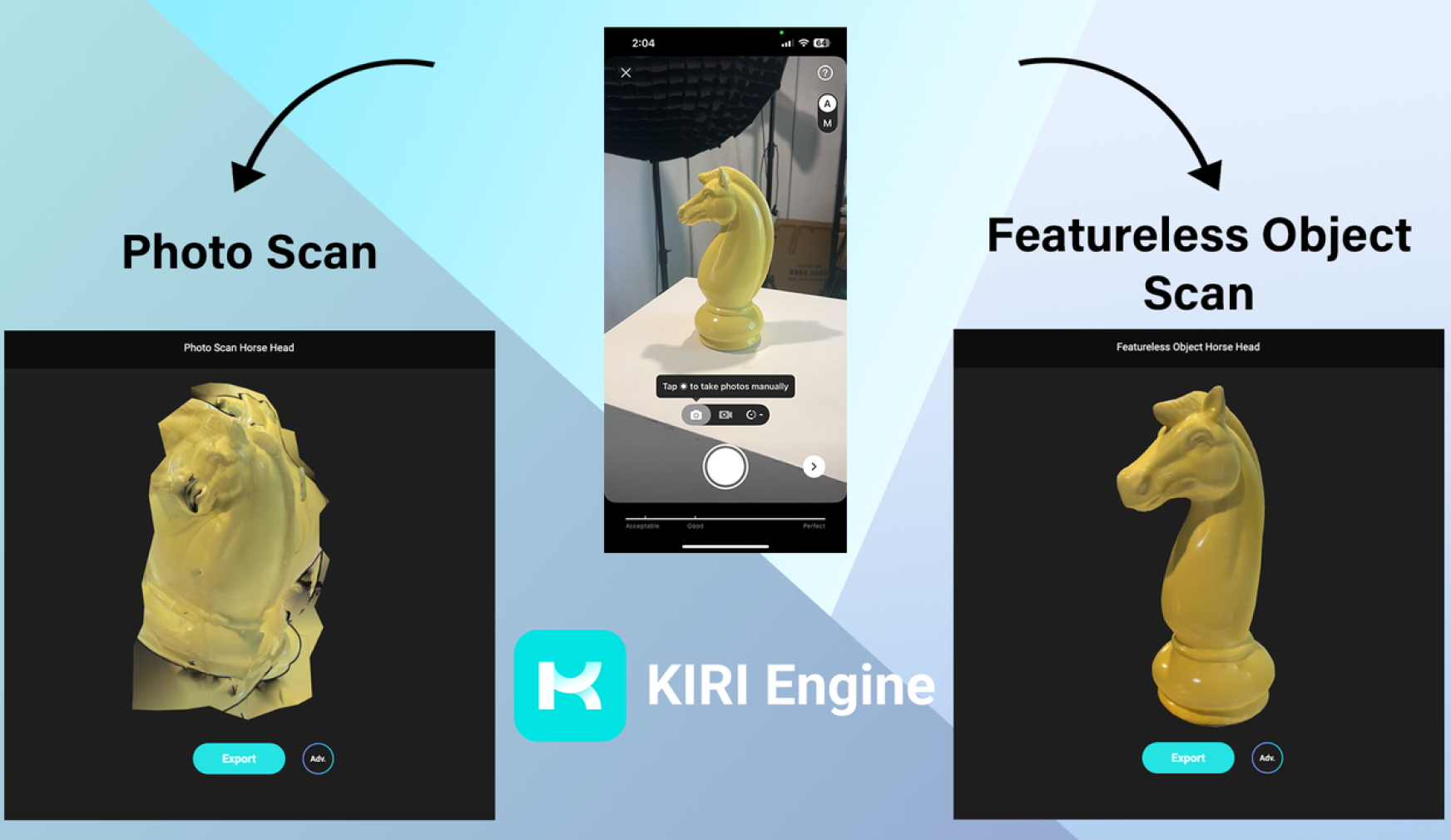
No longer constrained by shiny surfaces, having Featureless Object Scan and other scanning methods such as 3DGS and LiDAR scanning available at hand gives KIRI users much more versatility in 3D scanning. Not to mention, Featureless Object Scan is a KIRI Engine exclusive technology!
All in all, be sure to select the correct scanning method. It's crucial to obtaining a good scan. Here's a quick and catchy reference guide:
Photo Scan: Perfect for intricate, 'featureful' objects.
Featureless Object Scan: Ideal for shiny, reflective, or transparent items.
3DGS: Achieve precise and accurate full 3D visualizations.
